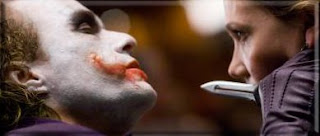Alive.
Two things make Madagascar 2 stand out from the usual offer of 3D animation films. The script and the performances (performances? excuse me? I though it was a “cartoon”??). I'll start by the second one instead of the first so as to test if you are alert and engaged, while adding a bit of chaos.
The characters no longer seem to be animated as such at any point. Instead, they now look a lot more natural, and act and move as naturally and effortlessly as yourself (unless of course you are one of those couch potato persons, in which case you can consider that they would easily beat you at that). We often find them trusting comments to other characters, and struggling with their emotions. At times, they even look like their voice actors (I'm certain Ben Stiller would move LIKE THAT if he was a lion). They are alive.
As for the script, we are presented with an enjoyable story with overtones of friendship, love and family. Don't throw up yet. They manage to make it enjoyable and not too cheesy, and top it up with a couple of the most beautifully dialogued scenes seen so far not just in an animated film, but in any film. And this is the key.
3D films have come a long way. More and more, secure in satisfying technological frames by now, 3D-film filmmakers seem to concentrate more and more in something else apart from the animation and the looks themselves, which can only be beneficial for the audience. I see Madagascar 2 as a potential milestone in animation, just as Toy Story 2 -the first script for one of these films to win a Golden globe for best comedy/musical- or, of course, The Incredibles -whose script was also nominated, this time for an oscar, unfortunately but fairly lost out to the exquisite Eternal sunshine of the spotless mind, only against another giant could The Incredibles fall!-. Moreover, this existing technological situation, combined with animators' skills and creativity, is meant to keep providing us not only with lots of animation films to come, but with good films. Closer and closer to this academy award for “3D character performance” now.
And yes, the rest is all as expected (I now, I digress). Like in the first "episode", fun characters, simple but very personal visual style and very fast pace. There always seem to be something happening, and the camera is always there to capture it. Go watch it.


















